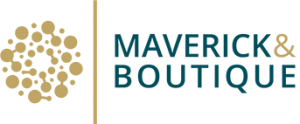Throughout history, change happened slowly and incrementally,
and could be “managed” or controlled using linear methods and more traditional models of leadership and management. Even the most progressive “change management” processes were based on the belief that it’s possible to control the outcome. Not any more.
With increasing complexity and accelerating change has come a new understanding of organizations as complex adaptive systems, that must continually adapt and change in order to thrive. Open to a wide variety influences from within and without – many of which are unanticipated – organizations must now be able to “update their operating systems” on a regular basis. And this capacity must be distributed throughout the organizational structure so that adaptation can be rapid and agile wherever it is needed.
Our whole-system approach to organization change shifts the focus from the “expert few” to the “wisdom of the many.” It recognizes that creativity, implementation and leadership capacity is distributed throughout an organization system, and any new configurations, especially adaptive ones, emerge at the intersection of professional, functional and sectoral differences.
We help organizations engage a broad range of stakeholders to collectively analyze, invent or decide what new products, services and methods are required, to design new roles, agree new rules of interaction and develop new skills in a way that anticipates the future needs of staff, shareholders, suppliers, customers and the community.
To help you get from HERE to THERE
we offer
Agility alignment: Our Complexity Model of Change explains the accelerating rate of change and provides context for the emergence of a “wise-application of knowledge economy” (Wisdom Economy). We help organizations analyze their stage of socio-technological development and reliably decide what skills/capacities and products/services are now required to stay ahead of the curve.
Real-time distributed strategizing: Traditional, formal models of strategic planning are now no longer effective for dealing with ever shortening cycles of technological and social change. We help organizations use “strategy as a daily way of working” to develop real-time strategic agility. We involve everyone in the process of starting new projects and programs.
Complex adaptive systems structural design: Our clients learn how to design multi-flex organizations and projects involving interdependent organization types within a complex adaptive framework. They learn ways to manage the interface between open, emergent systems and closed traditional, linear and systems-engineering, manufacturing, information processing and logistics-focused systems.
High performance cross-boundary teamwork: Today’s teams are required to interact across multiple organizational boundaries and with diverse stakeholder groups. We support our clients in learning and implementing the most effective techniques for collaboration and coordination across these boundaries. Teams learn how to design and facilitate their own meeting and learning activities, discourse models and relating skills..
Polarity Thinking: Our clients learn to see, map and tap the energy in polarities, dilemmas or tensions that often appear as “wicked”, unsolvable problems. Like cost and quality, centralization and decentralization, preserve core/continuity and innovate/change. Organizations that manage polarities well over time get results including: sustained high performance, increased engagement and fewer sources of conflict. Learn more about polarities.



